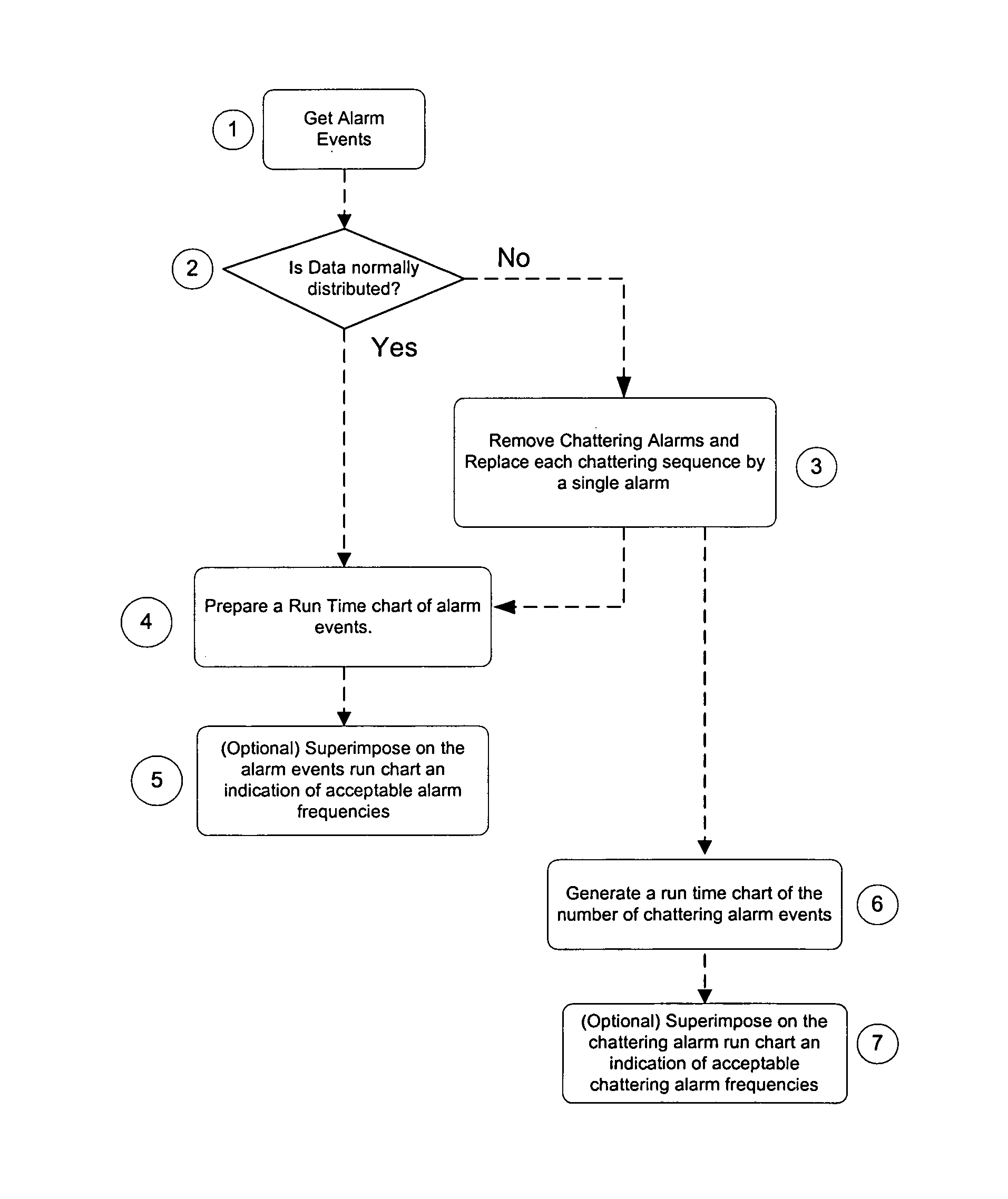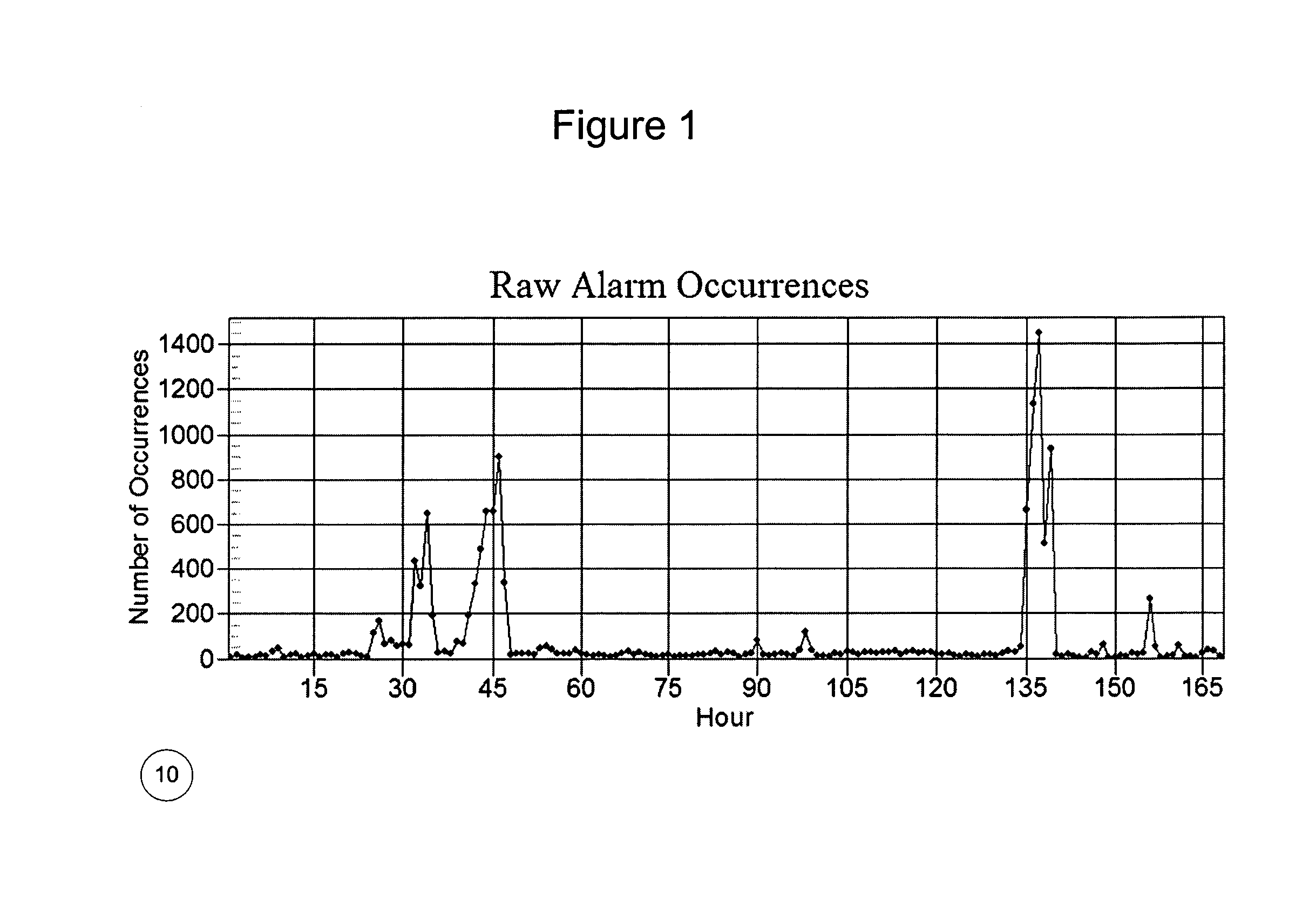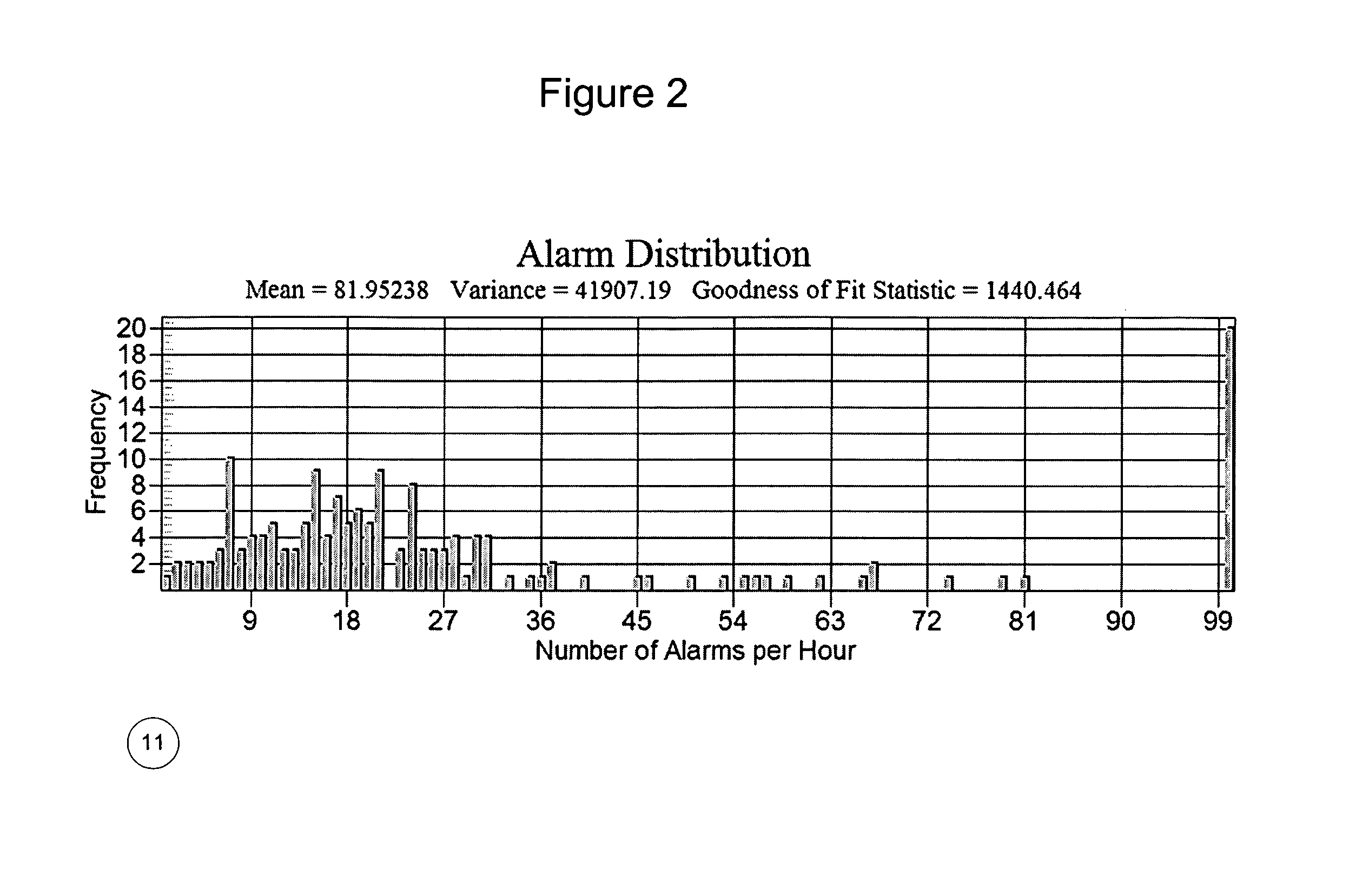Statistical quality control of alarm occurrences
a technology of statistical quality control and alarm occurrences, applied in the direction of testing/monitoring control systems, instruments, horology, etc., can solve the problems of fundamental difficulty in interpreting the plot of alarm occurrences, loss of effectiveness at controlling the plant, and inability to accurately indicate the number of alarms.
- Summary
- Abstract
- Description
- Claims
- Application Information
AI Technical Summary
Benefits of technology
Problems solved by technology
Method used
Image
Examples
Embodiment Construction
[0042]Statistical quality control of alarm occurrences requires historized values of the alarm times over a suitably long period 1, which are usually stored in a computer historian or database 8. From this data, a standard statistical quality control run chart of the number of alarms per time period 10 and standard histogram of the alarm frequencies 11 may be generated and drawn using a general purpose computer 9. Superimposed on the run chart may be indications of acceptable values of the alarm frequency. Some standard goodness-of-fit metric may also be generated to indicate the normality of the alarm frequency distribution.
[0043]If a standard statistical goodness of fit tests indicate non-normality 2, a transformation of the data set is done by removing any chattering alarms and leaving in place the single alarm that occurred at the time that the chattering sequence started 3. A chattering alarm is defined as one that is preceded within some short period of time by an alarm of the...
PUM
 Login to View More
Login to View More Abstract
Description
Claims
Application Information
 Login to View More
Login to View More - R&D
- Intellectual Property
- Life Sciences
- Materials
- Tech Scout
- Unparalleled Data Quality
- Higher Quality Content
- 60% Fewer Hallucinations
Browse by: Latest US Patents, China's latest patents, Technical Efficacy Thesaurus, Application Domain, Technology Topic, Popular Technical Reports.
© 2025 PatSnap. All rights reserved.Legal|Privacy policy|Modern Slavery Act Transparency Statement|Sitemap|About US| Contact US: help@patsnap.com



